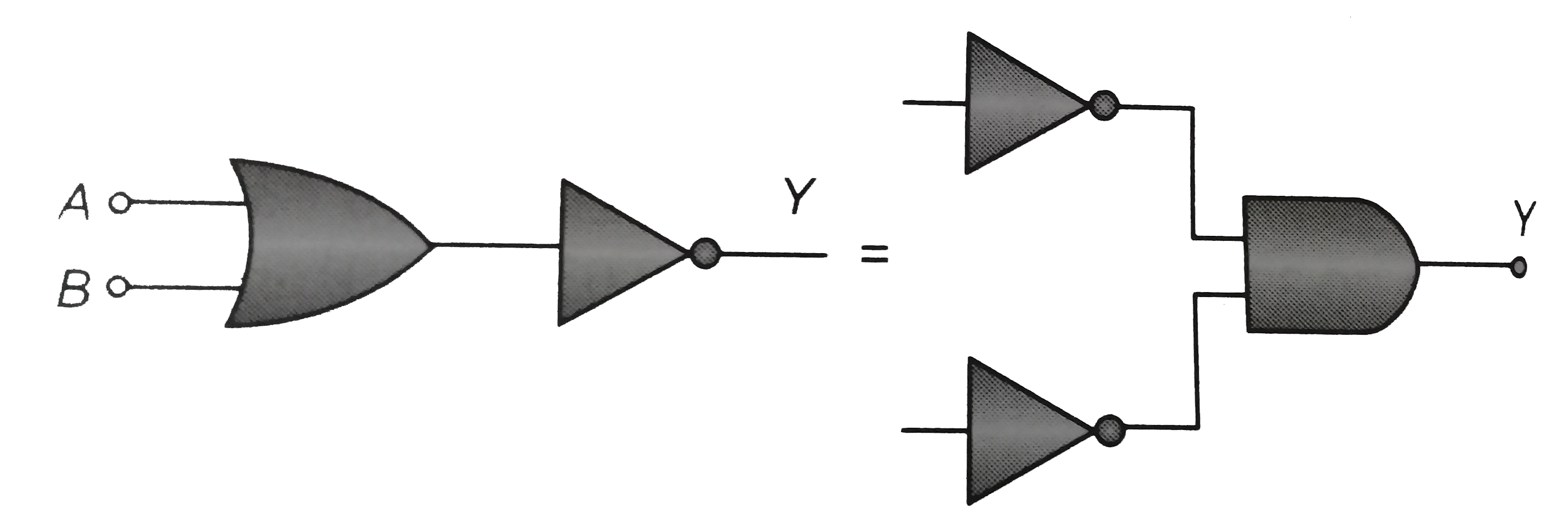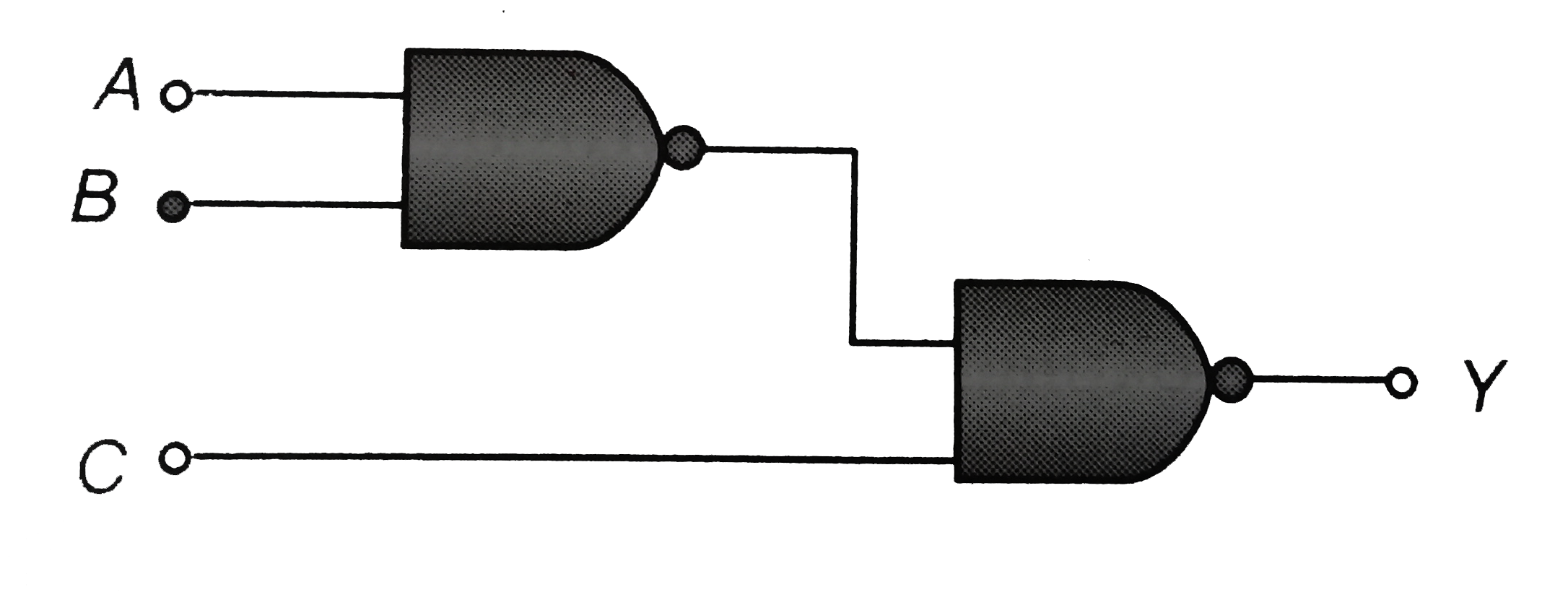De Morgan's law (A∪B)1=?
A1∩B1
A1∪B1
ϕ
None of these
The correct Answer is:A
Similar Questions
Knowledge Check
De morgan's law (A∩B)1=?
AA1∩B1BA1∪B1CϕDNone of theseAssertion: De Morgan's theoram ¯¯¯¯¯¯¯¯¯¯¯A+B=¯¯¯A.¯¯¯B may be explained by the following circuit.

Reason: In the following circuit, for output, inputs ABC are 101.
 AIf both the assertion and reason are true and reason is a true explantion of the assertion.BIf both the assertion and reason are true but the reason is not true the correct explantion of the assertion.CIf the assertion is true but reason falseDIf both the assertion and reason are false.
AIf both the assertion and reason are true and reason is a true explantion of the assertion.BIf both the assertion and reason are true but the reason is not true the correct explantion of the assertion.CIf the assertion is true but reason falseDIf both the assertion and reason are false.If P(B)=35,P(A/B)=12 and P(A∪B)=45 , then P(A∪B)'+P(A'∪B) is equal to :
A1/5B4/5C1/2D1
Complement set || De morgan's law || n(AUB) =n(A)+ n(B)-n(A v B) || Revision OF 9th class Probability || Empirical Probability || Theoretical/Classical probability || Examples
View SolutionTheorem 5 ( De Morgans law) (DeMorgans Law)
View Solution(a) The Complement of the union of two sets is the intersection of their complements and the complement of the intersection of two sets is the union of their complements.These are called De Morgan's Law.Prove any one of the above two laws by Venn diagram (use colour pencil,scale,"],[" etc...) (b) Verify any one of the De Morgan's Law for U={1,2,3,4,5,...8,9,10}A={2,3,5,7,9,10}B={1,3,5,8,10}
View SolutionIf A and B be two sets and A∪B∪C=U. Then, {(A−B)∪(B−C)∪(C−A)}' is equal to
View SolutionLet U be the universal set and A∪B∪C=UThen[(A−B)∪(B−C)∪(C−A)]equals
View Solution
